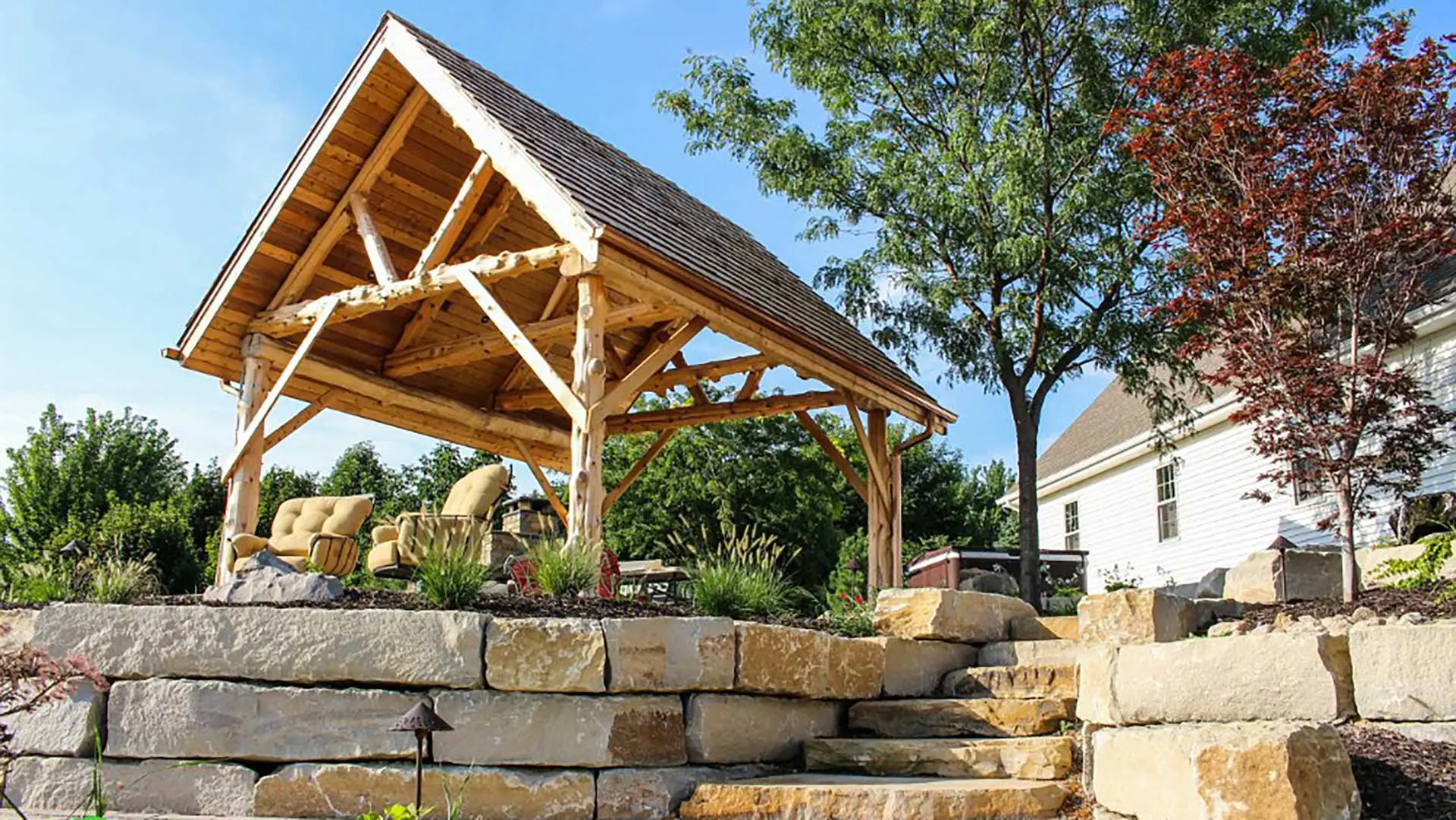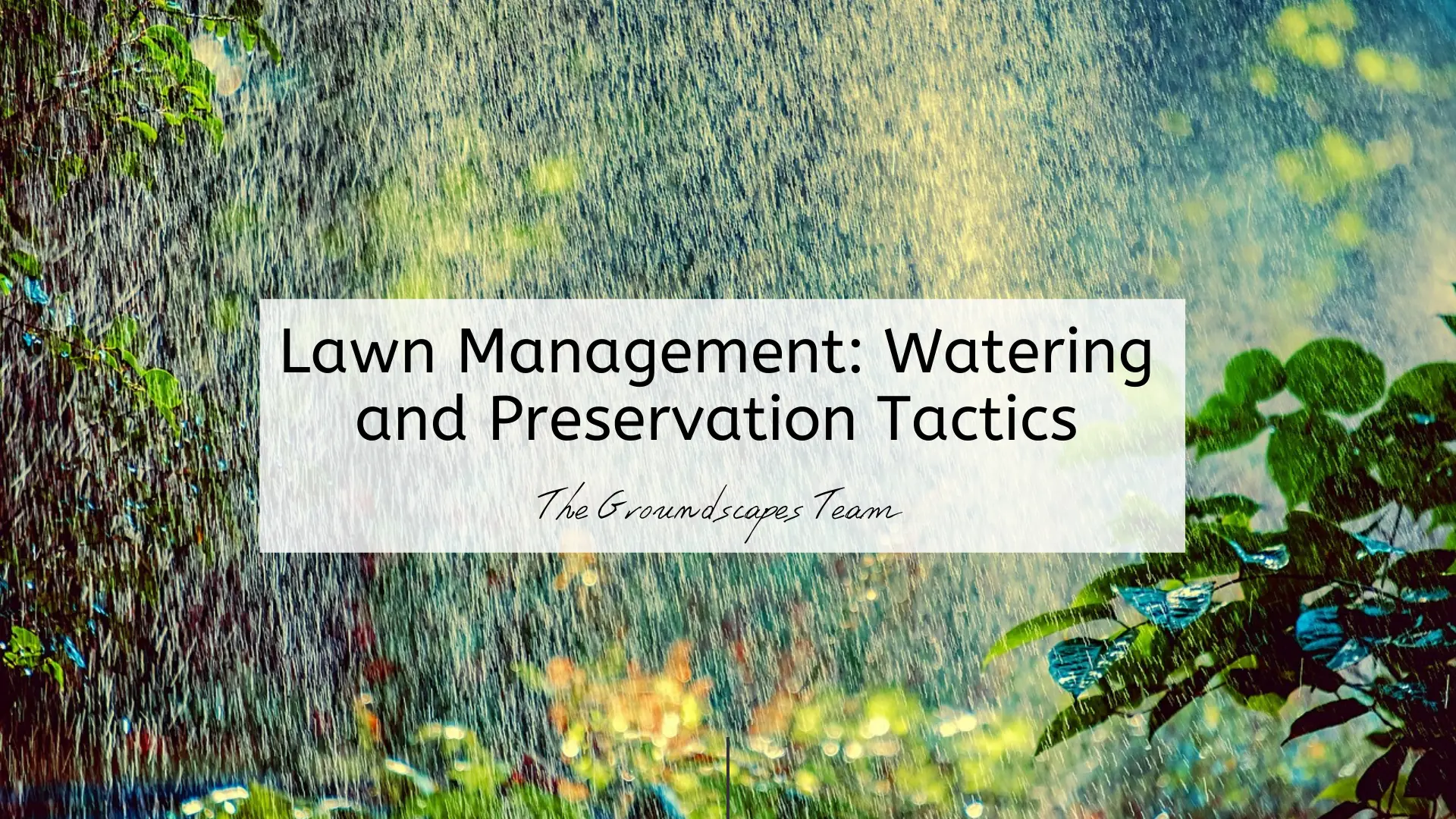Re-designing your lawn is a home improvement that everyone considers at some point. Whether it is simply adding new features to an existing landscape, or completely modifying your lawn by implementing new trees, bushes, and flowers - the underlying desire remains the same: to keep your outdoors clean, healthy, and beautiful.
At Groundscapes, we love to create new lawn and home environments for our customers. But what we also consider to be equally important, is to prepare our customers for maintaining and preserving their own lawn for the future. While the lawn maintenance process involves many separate components including trimming, mowing, weeding, aerating, and so forth, one area that is especially important is watering.
All plants, trees, bushes, and flowers need to be watered. But how much is just enough? And what different watering routines are required for different lawn features? Below, our team of expert craftsmen have broken down the three most important watering tactics for effectively managing your newest lawn improvement.
Sod Watering:
Sod refers to the surface of the ground that has grass growing on it. If you have recently completed a new project in which new sod grass has been laid across your landscape you will want to keep in mind the following watering recommendations:
For at least the first two weeks after the sod has been laid, it is important to promote healthy root growth by keeping both the sod and the soil moist. The consistency should be close to that of a wet sponge. More practically this would mean that the sod would need to be watered 2 - 3 times per day, and sometimes even more if the weather is extremely hot.
Do not mow the sod for the first two weeks. As newly laid sod, both the grass blades and soil will be extremely sensitive as they take root. Avoid both foot and mower traffic until the first mowing. When you do decide to mow, make sure you cut back on how frequently you water the sod beforehand (1 - 3 days).
Once the sod has started to take root with the soil beneath it, an established aeration scheme is the best routine to implement. Frequent aeration will promote root growth and establish topsoil - both important for longevity and the overall healthiness of the sod.
Watering New Trees, Shrubs, and Perennials:
For more sophisticated lawn improvements, such as trees, shrubs, bushes and perennials our team recommends a different watering scheme from sod care or traditional lawn care:
Ensure that the new plants are kept moist for at least the first 3 to 4 weeks after being (im)planted. This is to promote healthy root growth.
Monitor moisture levels by checking once a day: only water the new plants when necessary, as too much water can be equally as damaging as too little water. Check water levels by sticking your finger into the ground near the base of the plant.
It is generally not recommended to water new plants with lawn sprinklers. This is because lawns typically require more water than landscaping plants, and the imbalance can lead to over-watering. Instead, to ensure proper watering, add a drip zone to your sprinkling system or water by hand.
Watering Lawns:
Last but not least, lawn management is perhaps the most common watering need for our customers. Consider the following recommendations for keeping your lawn healthy:
Water the lawn 3 times a week for a total of 1 inch during the spring and fall months, and 1.5 inches a week during the summer months or extended periods of drought.
Note: It is important to adjust your watering frequency based on the amount of rain. If you are unsure how to monitor the effect of rain on your lawn, a rain sensor can be installed on your sprinkler system to help with over-watering and to avoid having to continually adjust your controller.
Avoid watering the lawn every day with only a small amount of water. This strategy will actually weaken the root system of the lawn and can lead to fungus issues.
Plan to deeply water your lawn every 2 - 3 days. This will help strengthen the roots of the lawn. Do not over water during these sessions, as that can have negative long term effects on the grass. Be sure to adjust the amount of water per area depending on the amount of sun or shade that area receives.
During the spring and fall months, you will want to change your watering routine to 15 - 30 minutes, for three times each week.
Note: For lawn patches that are exposed to large amounts of sunlight, or for watering your lawn in the heat of summer, it is highly recommended to extend watering time to up to 1 hour per area.
To check or test the health of your grass, keep in mind the following rule of thumb: If grass does not spring back up after walking on it or begins to show a grey appearance, it is time to water!
Get in Touch Today!
For specific questions about sod watering, new plants, or basic lawn management, do not hesitate to reach out to us with your questions or personal situation! We are here to help!













Comments (0)
Thanks for your comment!
Thanks for your feedback! Your comments have been successfully submitted! Please note, all comments require admin approval prior to display.
Error submitting comment!
There is a problem with your comment, please see below and try again.